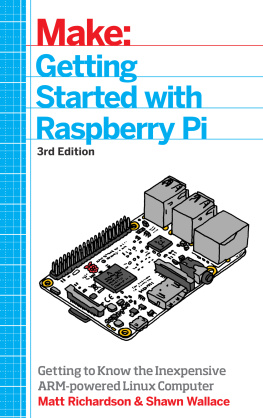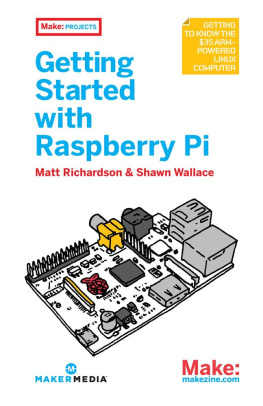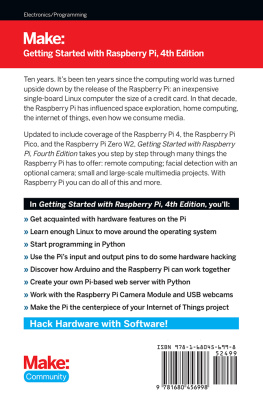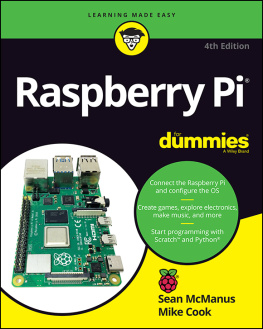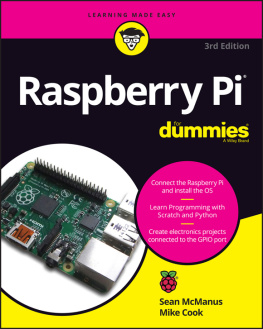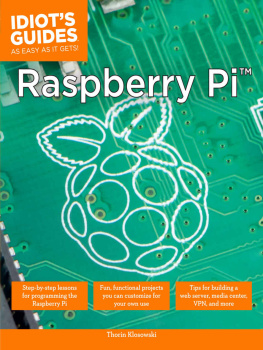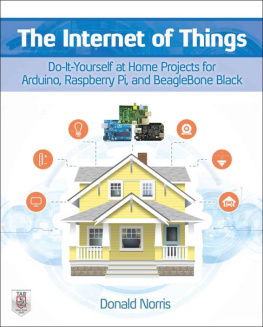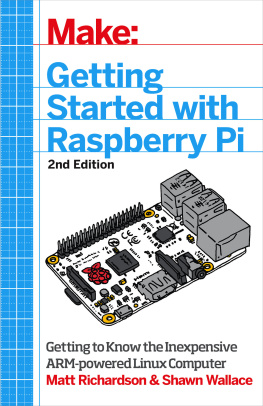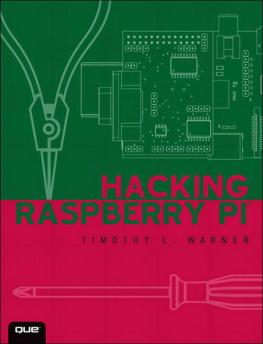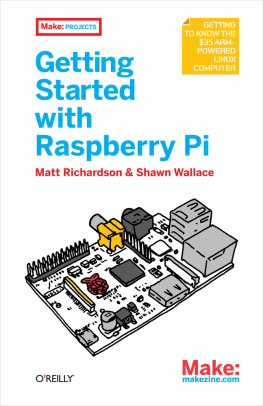Richardson Matt - Getting started with Raspberry Pi: getting to know the inexpensive ARM-powered Linux computer
Here you can read online Richardson Matt - Getting started with Raspberry Pi: getting to know the inexpensive ARM-powered Linux computer full text of the book (entire story) in english for free. Download pdf and epub, get meaning, cover and reviews about this ebook. City: San Francisco;CA, year: 2016, publisher: Maker Media, Inc, genre: Home and family. Description of the work, (preface) as well as reviews are available. Best literature library LitArk.com created for fans of good reading and offers a wide selection of genres:
Romance novel
Science fiction
Adventure
Detective
Science
History
Home and family
Prose
Art
Politics
Computer
Non-fiction
Religion
Business
Children
Humor
Choose a favorite category and find really read worthwhile books. Enjoy immersion in the world of imagination, feel the emotions of the characters or learn something new for yourself, make an fascinating discovery.
- Book:Getting started with Raspberry Pi: getting to know the inexpensive ARM-powered Linux computer
- Author:
- Publisher:Maker Media, Inc
- Genre:
- Year:2016
- City:San Francisco;CA
- Rating:5 / 5
- Favourites:Add to favourites
- Your mark:
Getting started with Raspberry Pi: getting to know the inexpensive ARM-powered Linux computer: summary, description and annotation
We offer to read an annotation, description, summary or preface (depends on what the author of the book "Getting started with Raspberry Pi: getting to know the inexpensive ARM-powered Linux computer" wrote himself). If you haven't found the necessary information about the book — write in the comments, we will try to find it.
The Raspberry Pi is a credit card-sized computer that plugs into your TV and a keyboard. It is a capable little computer which can be used in electronics projects, and for many of the things that your desktop PC does, like spreadsheets, word processing, browsing the internet, and playing games. It also plays high-definition video. This book takes you step-by-step through many fun and educational possibilities. Take advantage of several preloaded programming languages. Use the Raspberry Pi with Arduino. Create Internet-connected projects. Play with multimedia. With Raspberry Pi, you can do all of this and more.
Richardson Matt: author's other books
Who wrote Getting started with Raspberry Pi: getting to know the inexpensive ARM-powered Linux computer? Find out the surname, the name of the author of the book and a list of all author's works by series.

